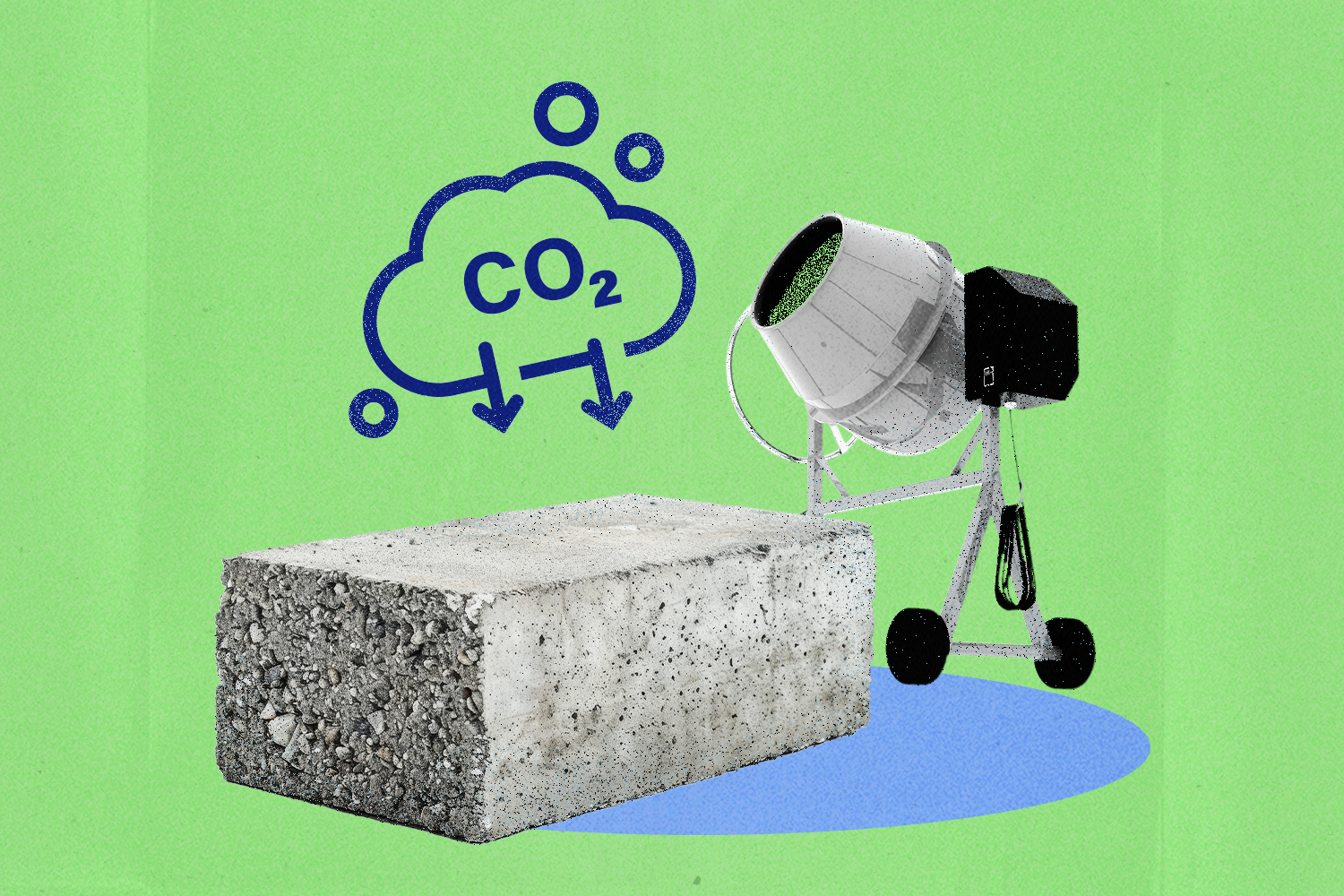In concrete, carbon removal offers value beyond CO2 disposal
Voices
Imagine if we could take the root of our climate crisis, carbon dioxide, and use it as a solution.
We can.
To achieve net zero carbon emissions by 2050, we’ll need the full spectrum of carbon removal solutions, as the United Nations’ Intergovernmental Panel on Climate Change makes clear.
When we talk about removing carbon from the atmosphere, many journalists, investors and policymakers seem to focus on one particular carbon removal pathway: Direct air capture (DAC) paired with geologic storage. While DAC to geologic storage will be a crucial tool in our carbon removal toolbox, it’s currently sucking oxygen away from other essential removal technologies.
Right now, geologic storage wells come with regulatory and infrastructure hurdles, not to mention public resistance. What’s more, geologic storage treats CO2 as waste that belongs in an expensive landfill a mile underground.
Another solution merits our attention — one that embraces the virtue of recycling, not just for aluminum, paper and plastics, but for CO2 as well. Carbon utilization puts captured CO2 to work as an input for a wide range of products, including garments, vodka, jet fuel and concrete.
The potential with concrete is particularly massive. With an estimated 35 billion metric tons of concrete poured around the world annually, it’s impossible to envision society without this crucial substance. It’s the world’s most used building material due to its low cost, local availability and versatility. We’ll need a lot more concrete to construct durable, climate-resilient cities. Unlike energy, there are no suitably scalable substitutes for concrete.
Right now, all that concrete comes with a hefty carbon footprint. Cement — its key ingredient — generates roughly 7% of global CO2 emissions, three times more emissions than aviation worldwide. The industry has set a roadmap for achieving net zero emissions using a combination of climate solutions, mainly relying upon carbon capture, utilization and storage (CCUS).
With 800 systems licensed worldwide, CarbonCure Technologies is the industry’s most widely deployed carbon utilization solution today, and we’re just scratching the surface of global concrete production. How does CarbonCure work? Within seconds of injecting atmospheric or anthropogenic CO2 into concrete, the gas mineralizes and becomes permanently embedded in the concrete like a rock. Even when the concrete is crushed at the end of its useful life, the mineralized CO2 will remain locked in its rock-like form. This reaction also maintains concrete’s compressive strength, thereby requiring less carbon-intensive cement in each batch.
While carbon utilization in concrete is not a substitute for the scale of carbon removal offered by geologic storage, it is proven, cheaper and immediately deployable at a global scale. In collaboration with Heirloom, carbon utilization in concrete will also catalyze the deployment of DAC and point-source capture projects before transportation infrastructure or regulatory approvals are completed for geologic storage.
To put this strategy in high gear, we need policies that will help it scale rapidly. The 2022 Inflation Reduction Act allowed the utilization of low volumes of captured CO2 to qualify for a tax credit, but the credit for utilizing CO2 is nearly 28% less valuable than the credit for storing it underground. We need to revise the tax credit via the bipartisan Parity Act so that carbon utilization is as incentivized as carbon sequestration while allowing the credit to increase with inflation.
As the largest consumer of concrete, federal, state and local governments also have the buying power to drive swift systemic change. Federal agencies, under the Biden administration’s Buy Clean Initiative, are deploying billions of dollars to procure sustainable materials, including greener concrete. This is a great first step to help concrete producers decarbonize their supply chains; additional federal procurement policies could go further, making carbon utilization a concrete industry standard.
Corporate procurement practices have a parallel role to play. The Build America Buy America Act is encouraging the private sector to onshore its manufacturing, resulting in the construction of many new factories, warehouses, data centers and offices. Many of these companies also have ambitious climate targets. Corporate climate leaders such as Amazon, Microsoft, General Motors and others are taking action by sourcing CO2 mineralized concrete for new construction. Other companies pursuing climate pledges should join them.
Still, green procurement takes years before having a meaningful impact on a concrete producer’s day-to-day operations and decarbonization decision-making. Time is a luxury that we do not have. Truly kickstarting industrial adoption in this highly fragmented and low-margin commodity industry can only be achieved with direct rebate incentives. Similar to electric vehicle rebate programs, a simple cash incentive for eligible solutions would compel concrete producers to prioritize investment in new technologies while also accelerating widespread industry adoption.
Carbon utilization is not a 2030 solution. This is today. Hundreds of concrete producers around the world are already permanently storing CO2 during construction of homes, skyscrapers, roadways, runways and more. But we’re running out of time. An estimated 125,000 concrete plants operate worldwide that, with a simple retrofit, could be transformed into carbon removal factories.
We can’t wait. It’s time to turn our built environment into a global carbon sink that recycles CO2 for good.
Editor’s note: Investors in CarbonCure and Heirloom include Breakthrough Energy Ventures, a program of Breakthrough Energy, which also supports Cipher.